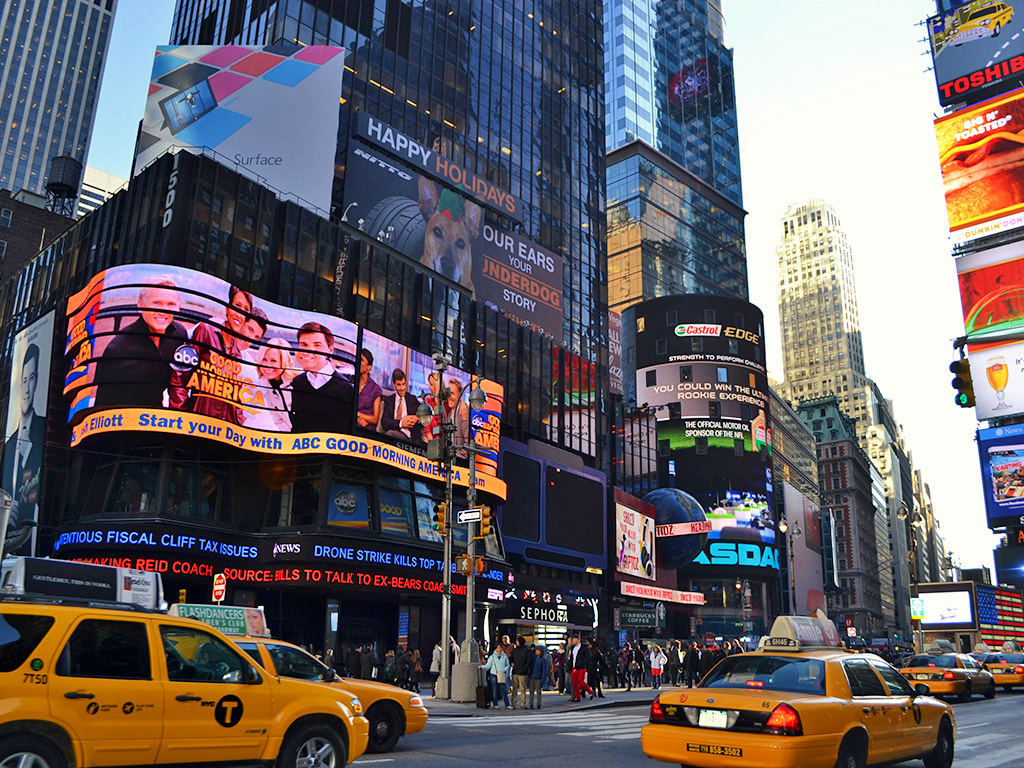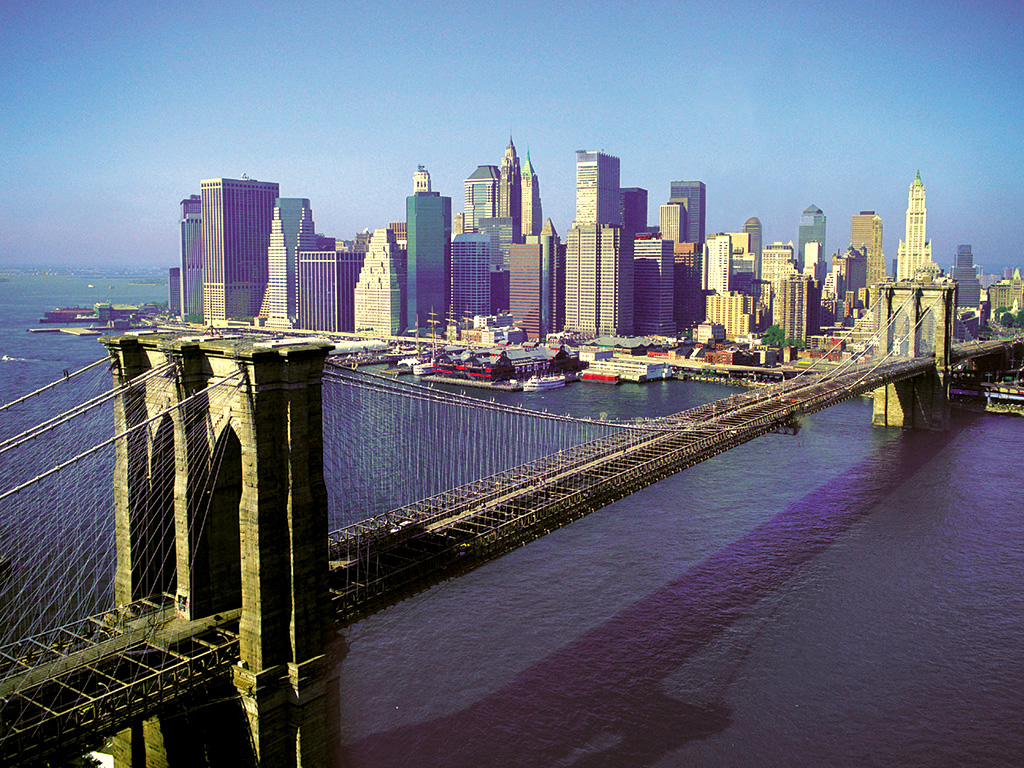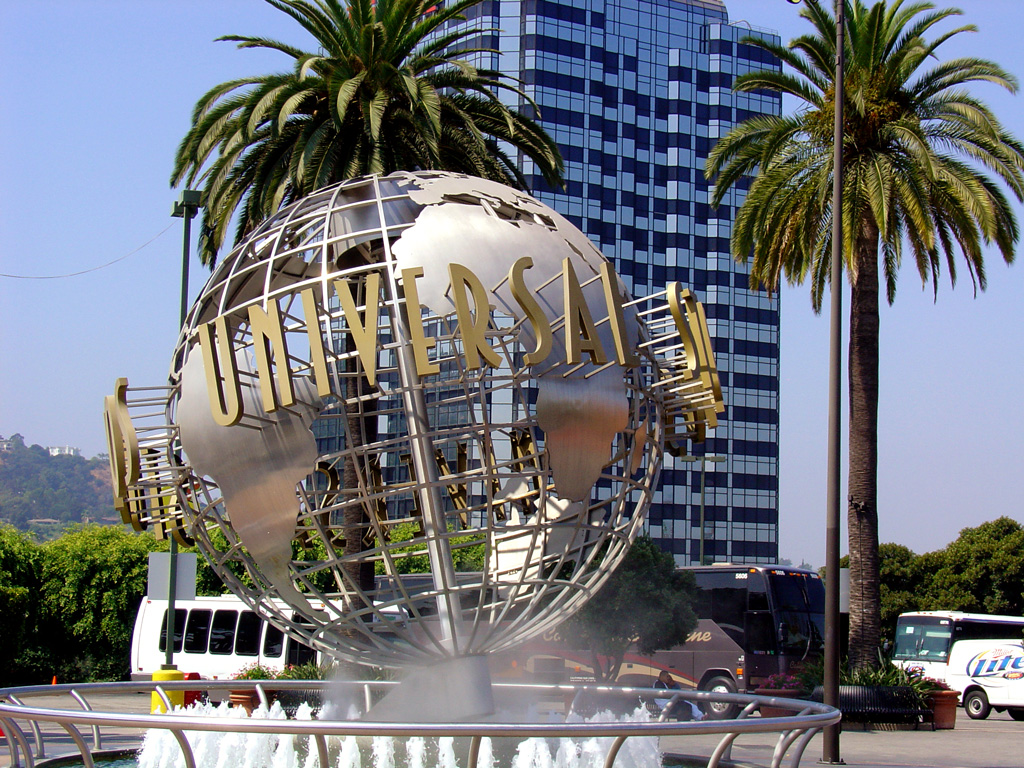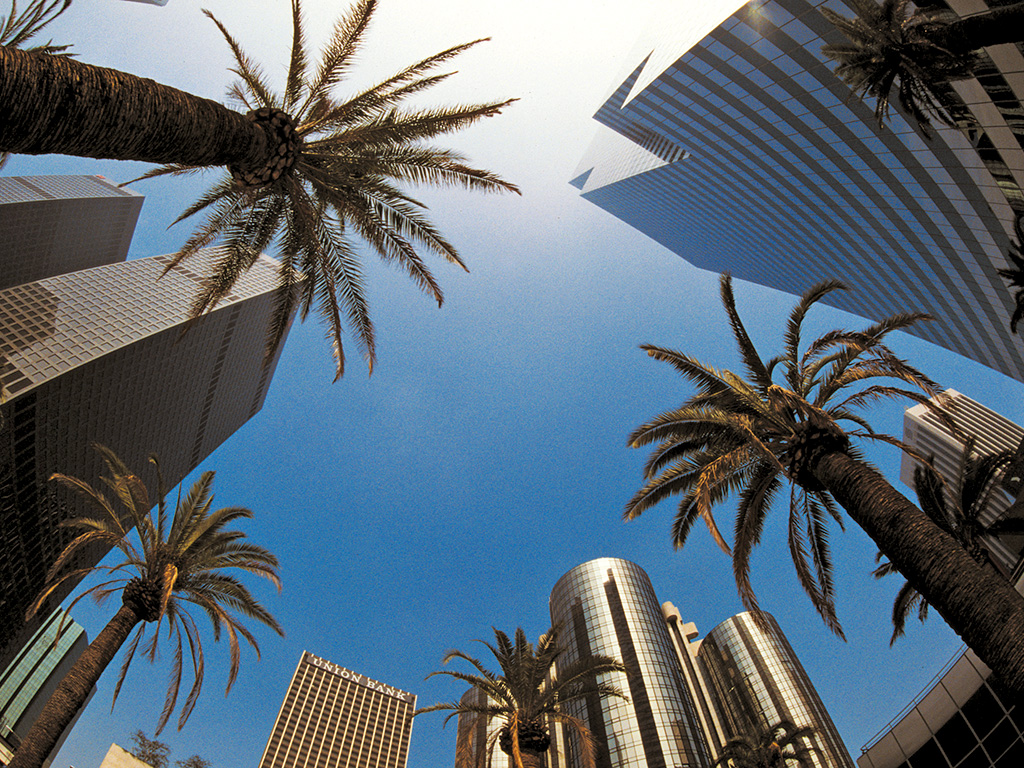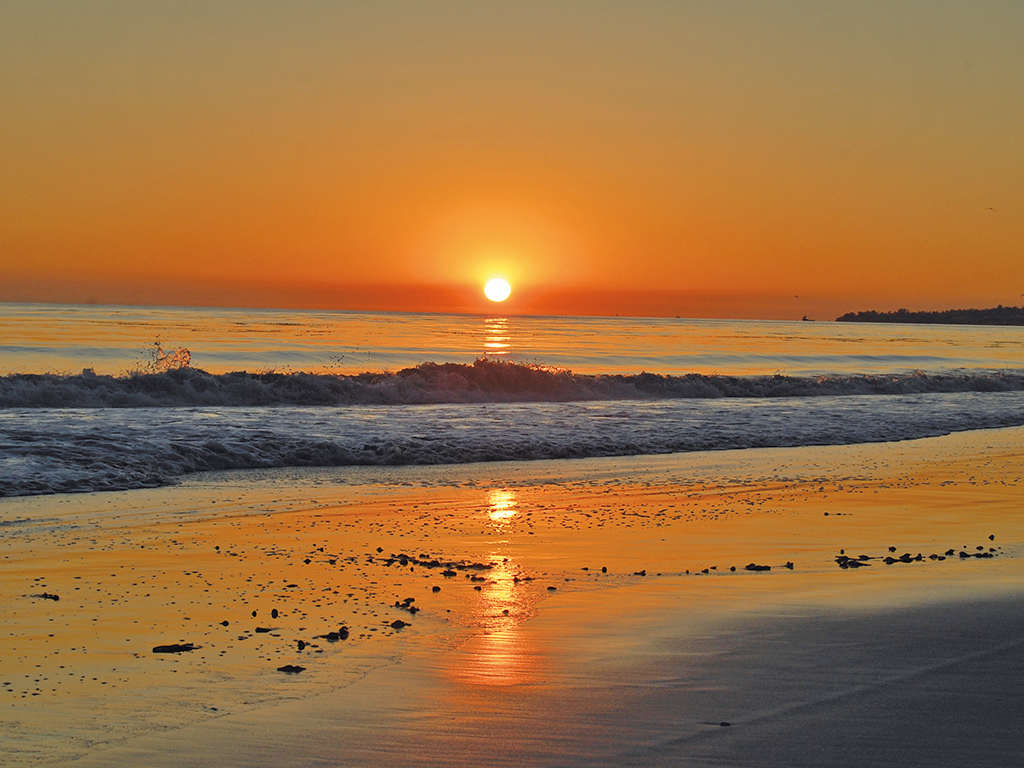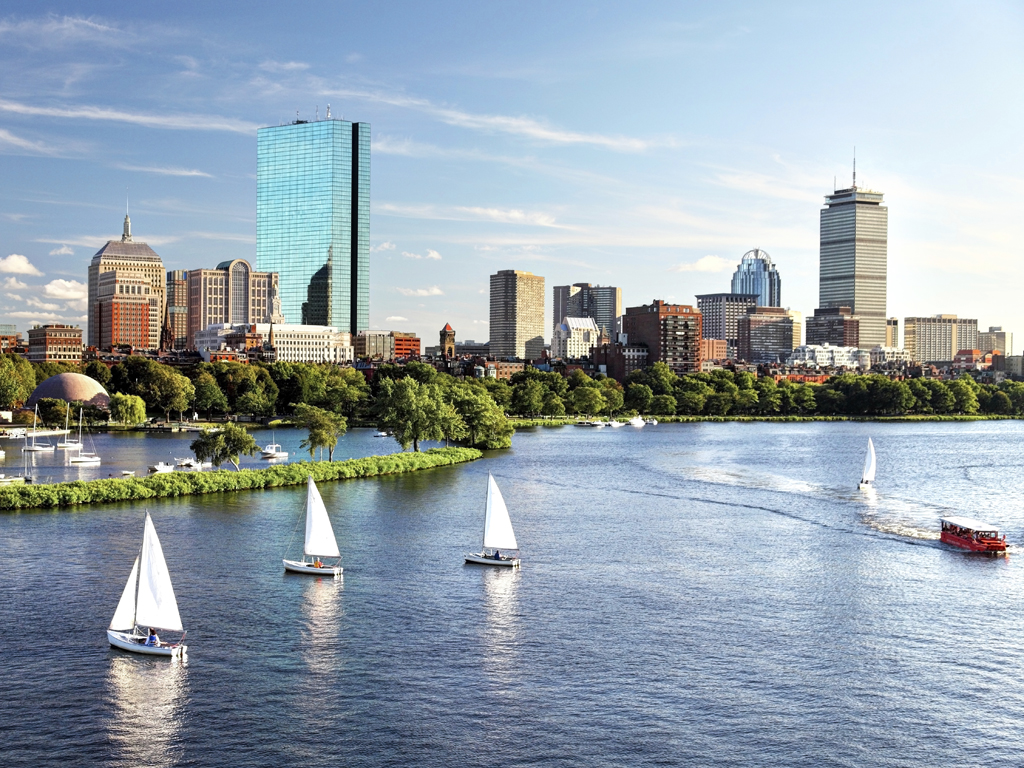🌼 Ưu đãi khi nhập học mùa xuân 🌼
Lên kế hoạch học tập của bạn ngay hôm nay để nhận ưu đãi từ Sprachcaffe nhé!
USA travel guide
The United States of America (USA) consist of 50 individual states, 48 of which are geographically contiguous. The state of Alaska, just like the "Continental United States", is also located on the North American continent. The state of Hawaii is located in the Pacific Ocean 3,682 km southwest of the American west coast. Due to its size and location, the country has a variety of geographical and climatic differences.
The country attracts visitors from all over the world not only with metropolis such as New York, Los Angeles, and Chicago, but also with its national parks, desert areas, mountain ranges, sandy beaches and polar regions. Visit the Empire State Building in New York, get a tan on Malibu Beach, hike through the Grand Canyon or travel to the icy tundra of Alaska: the possibilities are truly endless.
Let yourself be impressed by the Land of Opportunity and experience an unforgettable journey, no matter where it takes you.
The country attracts visitors from all over the world not only with metropolis such as New York, Los Angeles, and Chicago, but also with its national parks, desert areas, mountain ranges, sandy beaches and polar regions. Visit the Empire State Building in New York, get a tan on Malibu Beach, hike through the Grand Canyon or travel to the icy tundra of Alaska: the possibilities are truly endless.
Let yourself be impressed by the Land of Opportunity and experience an unforgettable journey, no matter where it takes you.
Geography
To the country's east is the Atlantic Ocean, to the west the Pacific. The US borders with Canada in the north and Mexico in the south. In terms of natural environments, the US has everything to offer, from forested areas and low mountain ranges on the east coast, mangrove forests in subtropical Florida, temperate rainforests in the northwest to the arctic region in Alaska, there is something for every taste.
Time zone
Climate and travel seasons
Climate chart in degrees Celsius (New York)
| January | February | March | April | May | June | July | August | September | October | November | December | |
|
|
3° | 5° | 10° | 16° | 23° | 27° | 30° | 29° | 26° | 18° | 13° | 5° |
|
|
-3° | -3° | 1° | 5° | 12° | 16° | 19° | 19° | 16° | 10° | 4° | 0° |
|
|
5hrs | 6hrs | 7hrs | 8hrs | 8hrs | 10hrs | 10hrs | 11hrs | 9hrs | 7hrs | 6hrs | 6hrs |
|
|
3° | 3° | 3° | 9° | 13° | 18° | 22° | 22° | 22° | 18° | 12° | 7° |
|
|
9 | 9 | 9 | 9 | 9 | 9 | 8 | 7 | 6 | 6 | 8 | 8 |
Climate chart in degrees Celsius (Los Angeles)
| January | February | March | April | May | June | July | August | September | October | November | December | |
|
|
18° | 19° | 21° | 22° | 23° | 25° | 28° | 29° | 28° | 25° | 24° | 19° |
|
|
7° | 8° | 10° | 11° | 13° | 15° | 16° | 17° | 16° | 14° | 11° | 9° |
|
|
7hrs | 8hrs | 9hrs | 8hrs | 9hrs | 9hrs | 11hrs | 11hrs | 9hrs | 7hrs | 8hrs | 8hrs |
|
|
14° | 14° | 15° | 16° | 17° | 18° | 19° | 20° | 19° | 18° | 17° | 15° |
|
|
4 | 3 | 4 | 3 | 1 | 0 | 0 | 0 | 0 | 1 | 3 | 4 |
Requirements for entering the USA
Currency
Healthcare
Packing checklist
Religion
Politics
Language and communication
Meeting and getting to know other people in the US is a casual process. A firm handshake and a friendly "Hello, how are you" are the standard. When asked how you are, you should respond briefly and succinctly with "Fine, thank you" or with a counter question. Americans do not usually expect an honest answer.
History
In 1565, Spaniards established the first settlement in St. Augustine, Florida. This was followed by the French and British, who established other settlements. Africans were brought into the country as slaves.
From 1757 to 1763, war broke out between the British and French. The French and Indian War was ultimately won by the British.
After the war, Britain found itself in debt, and the colonies were expected to pay part of the war costs. As a result, new taxes were created. However, these were refuted by the colonies since British settlers in America had no representation in London. The legendary Boston Tea Party took place in 1773 with the motto "No taxation without representation",
The American War of Independence lasted from 1775 to 1783 and led to the Confederation and the founding of the United States of America in 1777. The first president of the United States was George Washington (1789-1797). In the 19th century, the American Civil War occurred between the southern and northern states. President Abraham Lincoln campaigned against slavery. In 1865, the North won the Civil War and slavery was finally abolished.
Industrialization saw the rise of the United States as global economic power. After the Japanese attacked Pearl Harbor in 1941, Americans struck back with atomic bombs at Hiroshima and Nagasaki. Tensions with Russia during the Cold War peaked with the Cuban Missile Crisis in 1962.
Civil rights movements all over the county led, among other things, to the abolition of racial segregation and granted civil rights to people of colour, especially those living in the southern states. A historical moment of this movement was Martin Luther King's speech.
Festivals
Los Angeles: Chinese New Year/Golden Dragon Parade: (February) Every year Los Angeles celebrates the traditional Chinese New Year with a huge parade featuring a golden dragon, festival wagons, music, and breath-taking fireworks. LA Comedy Festival: (April - November) Are you a comedy film lover? Then you will surely be entertained and inspired by the huge selection of movies being shown at the LA Comedy Festival. LA Film Festival: (June) Los Angeles is known for being at the center of the American Film industry. Hence why it hosts a special film festival every year. You can expect to see roughly 100.000 visitors and more than 100 movies being shown. LA Street Food Festival: (June) : With over 100 trucks and restaurants, the LA Food Fest is a lot like an adventure park or music festival for foodies. Don't forget to leave some space for dessert! LA Food and Wine Festival: (August) For the gourmets among you, Los Angeles offers the right thing: the LA Food and Wine Festival.
Holidays
- In the USA, as almost everywhere else in the world, New Year's Day is celebrated on January 1.
- On the third Monday in January, Martin Luther King Day is celebrated in honor of the Baptist pastor and civil rights activist Martin Luther King, murdered in 1968. He was the best-known spokesman of the Civil Rights Movement.
- The third Monday in February is George Washington's Birthday (Presidents' Day). In the 1970s, Congress decided to establish this holiday to honor all U.S. presidents.
- The last Monday in May is celebrated as Memorial Day in honor of those who died in the war.
- July 4 is Independence Day. The national holiday commemorates the decision of the Continental Congress to declare the independence of the United States on July 4, 1776.
- The first Monday in September marks Labor Day.
- Columbus Day is celebrated on the second Monday in October. It celebrates Christopher Columbus' arrival in America on October 12, 1492.
- On November 11, the day of the armistice in World War I, the United States celebrates Veterans Day.
- The fourth Thursday in November is Thanksgiving Day. On this day, the U.S. celebrates the arrival of the Pilgrims landed at Plymouth Rock, Massachusetts.
- Christmas Day is celebrated on December 25.
Food
Tourist mistakes
There are strict restrictions on alcohol in the USA. Beer and wine can often be bought in supermarkets and licensed restaurants, while everything else is only available in state-licensed "liquor stores".
Payment in the USA is usually by credit card. For smaller amounts, you can often pay with cash. However, you should have a credit card in any case since it is mandatory in a lot of scenarios.
Tips and advice
If you go out to eat at a restaurant and don't finish your portion, it is customary to take the leftovers home. For this, you simply ask for a "doggy bag".
When you get to a restaurant don't just sit down but wait to be "seated" (especially in better dining establishments). This is pointed out at the entrance by the "Please wait to be seated" sign.
The use of toilets is always free in the USA (even in expensive hotels!). However, you should never use the word "toilet", but always ask for the "rest room", "bathroom".
Further information for traveling to the USA
Watch this video to see a quick overview of Los Angeles:

